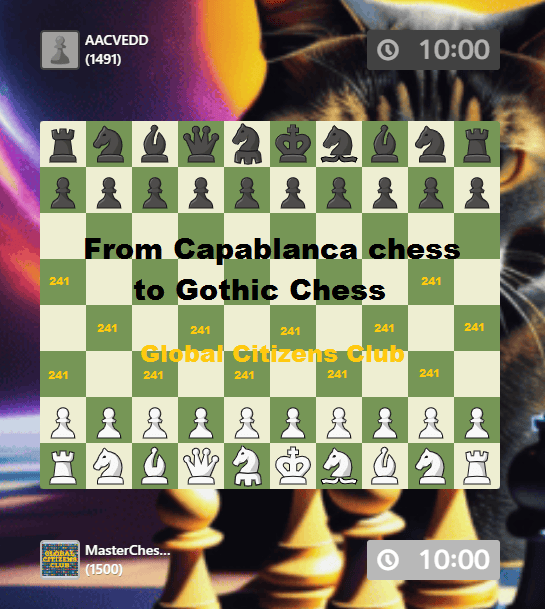
From Capablanca Chess to Gothic Chess
Capablanca chess (or Capablanca chess) is a chess variant invented in the 1920s by world chess champion José Raúl Capablanca. It incorporates two new pieces and is played on a 10×8 or 10x10 board.
Two new pieces are added to this game which is played on a 10x8 chessboard.
The chancellor can move like a knight or a rook. The archbishop can move like a knight or a bishop. To castle, the king moves three squares to each side and must drop onto the rook.
Capablanca chess has inspired a number of variants, arise from the different positions of the pieces:
Universal chess (1928) by Dr. Bruno Violet (on 10×10 board). He proposed two arrangements.
Grand Chess (1984) by Christian Freeling
Gothic chess, also known as Trice's chess (2000) by Edward A. Trice
Aberg's variation (2003) by Hans Aberg
Capablanca random chess (2004) by Reinhard Scharnagl
Grotesque chess (2004) by Fergus Duniho
Paulovich's variation (2004) by David Paulovich
Ladorean chess (2005) by Bernhard U. Hermes
Embassy chess (2005) by Kevin Hill
Univers chess (2006) by Fergus Duniho
Schoolbook chess (2006) by Sam Trenholme
Victorian chess (2007) by John K. Lewis
Modern Capablanca random chess (2008) by José Carrillo
I share a game I played of Gothic Chess
https://www.chess.com/variants/gothic-chess/game/52434836/0/1
Tactics and strategies for Gothic Chess (Capablanca Chess)
In our 241 club tomorrow and on Sunday, we develop the Seventh Edition of the first series of faster variants Passport Series 241 of 8 tournaments 3m and all 30 minutes long
Join the fun and challenge your limits